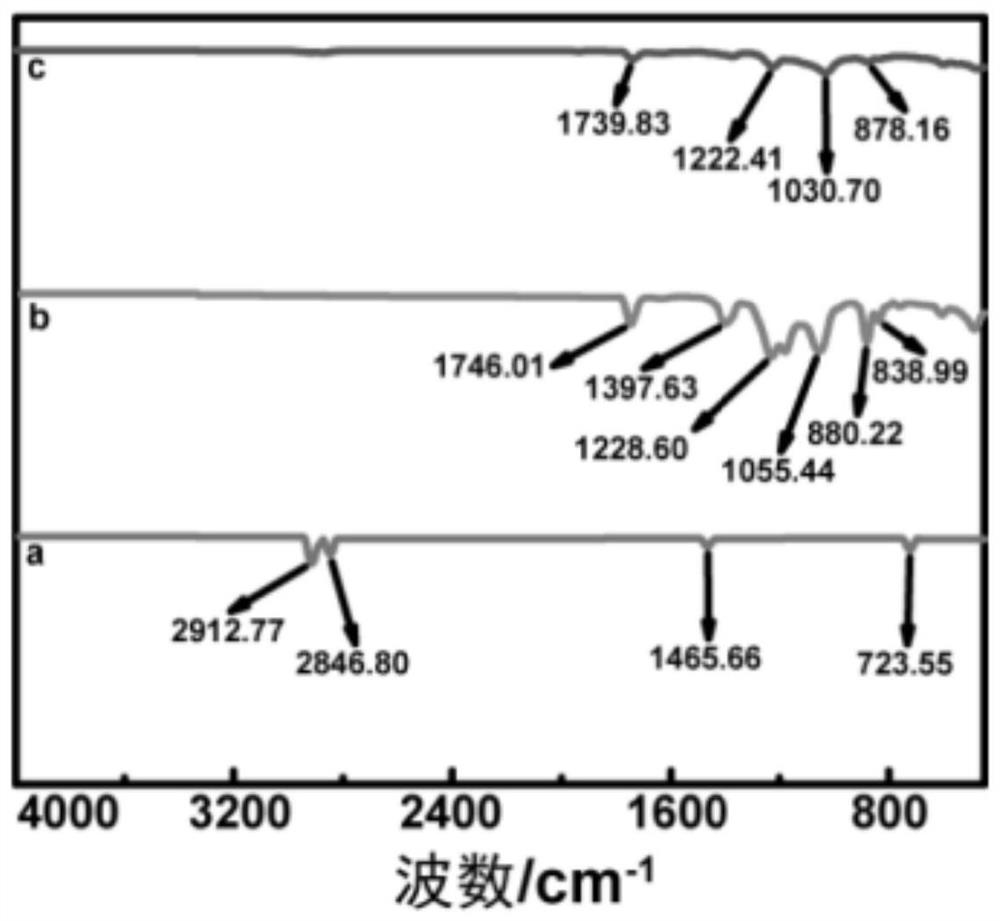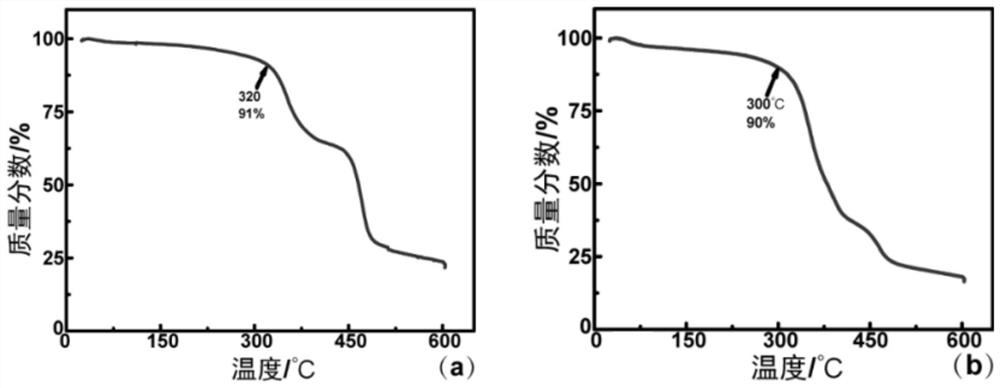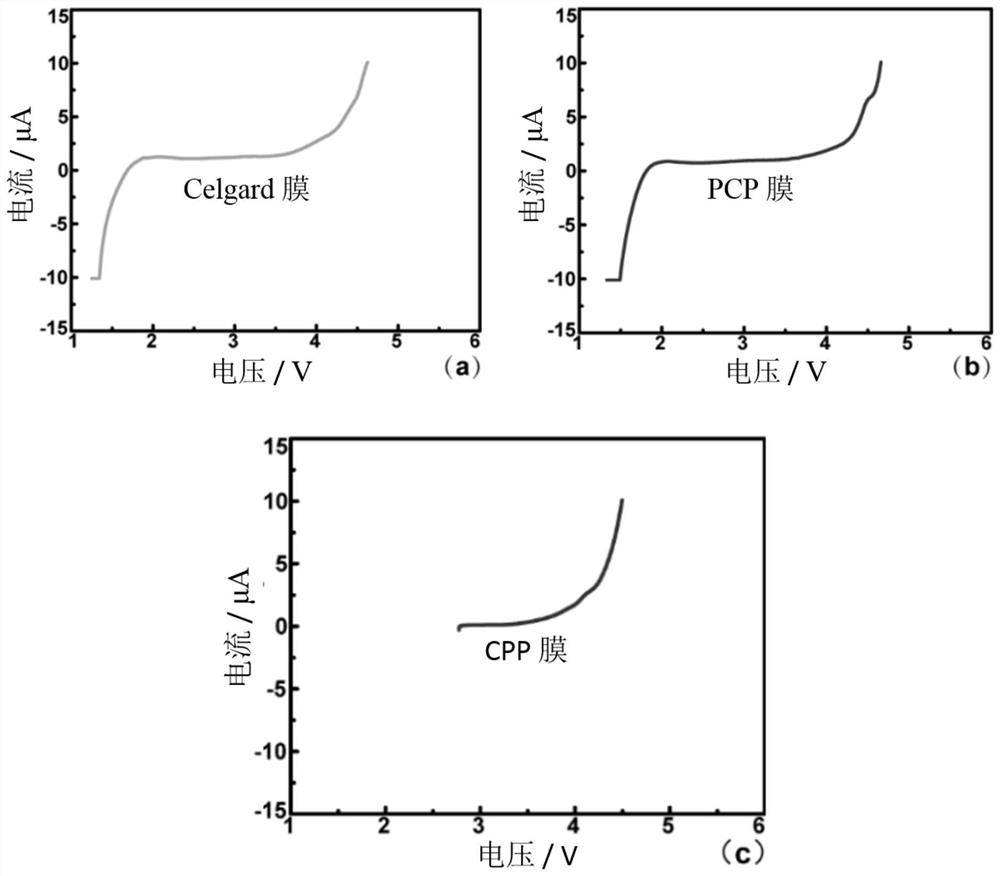Cellulose-based functional diaphragm as well as preparation method and application thereof
A cellulose-based technology, applied in the field of electrochemical energy storage, can solve the problems of limited ability to maintain electrolyte, poor thermal stability, affecting the safety and electrochemical performance of lithium batteries, and is conducive to large-scale production and raw materials. Inexpensive and accessible effects
- Summary
- Abstract
- Description
- Claims
- Application Information
AI Technical Summary
Problems solved by technology
Method used
Image
Examples
Embodiment 1
[0030] Example 1 Preparation of cellulose acetate-based diaphragm (CPP film) by liquid phase casting
[0031] Mix CA:PVDF:PEG at a mass ratio of 8:3:2, the total weight is 0.65g, put the mixed sample into a 20mL screw-top glass reagent bottle, add 10mL N,N-dimethylacetamide, Put in tetrafluoroethylene magnets and stir in a collector-type constant temperature heating magnetic stirrer at 60°C for 8 hours. If it is not fully dissolved, increase the temperature to 80°C and stir for another 2 hours. Put the stirred solution into an electric constant temperature blast drying oven at 80°C for 2 hours for defoaming, slowly pour the prepared solution into an ultra-flat petri dish, and gently shake the petri dish to make the glue evenly distributed. Dry the petri dish in a blast drying oven. After N,N-dimethylacetamide is dried, soak the diaphragm with distilled water, put it on a glass plate, and place it in a vacuum drying oven at 80°C for 12 hours in vacuum. . The resulting diaphra...
Embodiment 2
[0032] Embodiment 2 prepares cellulose acetate-based diaphragm (PCP film) with liquid phase coating method
[0033] Mix CA:PVDF:PEG according to the mass ratio of 4:8:3, the total weight is 3g, put it into a 20ml glass reagent bottle, then add 10ml N,N-dimethylacetamide, put it into the tetrafluoroethylene magnet, Stir at 60° C. for 12 hours in a collector-type constant temperature heating magnetic stirrer. Put the stirred solution into a blast drying oven at 80°C for 2 hours for defoaming, slowly pour the prepared solution onto a glass plate, scrape off the diaphragm with a 200μm-high coating film preparer, and then use a 1:1 Rinse with ethanol and water solution, then soak the diaphragm in deionized water tank for 5 minutes, stick the obtained diaphragm on a glass plate with a little ethanol, put it in a blast dryer for 6 hours at 80°C, and then transfer it to a vacuum drying oven for 80 °C for 12 hours in vacuum. The resulting diaphragm was sandwiched between two large we...
Embodiment 3
[0034] Embodiment 3 performance test
[0035] 3.1 Thermogravimetric analysis
[0036]The diaphragm prepared by embodiment 1 and 2 is carried out thermogravimetric analysis, and testing result is as follows figure 2 shown. Depend on figure 2 It can be seen that the CPP film prepared by the liquid phase casting method has obvious quality and shape changes after 300 ° C, indicating that the CPP film begins to decompose at this time. The PCP film prepared by liquid phase coating began to change obviously in quality and shape at 320℃. According to thermogravimetric analysis, the decomposition temperature of the above two separators is above 300°C, which is much higher than the decomposition temperature of the commercial Celgard (M825) separator at about 165°C (PE melting temperature). Therefore, the separators prepared in the present application have significantly improved thermal stability.
[0037] The separators prepared in Examples 1 and 2 and the commercialized separato...
PUM
| Property | Measurement | Unit |
|---|---|---|
| decomposition temperature | aaaaa | aaaaa |
| electrical conductivity | aaaaa | aaaaa |
| electrical conductivity | aaaaa | aaaaa |
Abstract
Description
Claims
Application Information
 Login to View More
Login to View More - R&D
- Intellectual Property
- Life Sciences
- Materials
- Tech Scout
- Unparalleled Data Quality
- Higher Quality Content
- 60% Fewer Hallucinations
Browse by: Latest US Patents, China's latest patents, Technical Efficacy Thesaurus, Application Domain, Technology Topic, Popular Technical Reports.
© 2025 PatSnap. All rights reserved.Legal|Privacy policy|Modern Slavery Act Transparency Statement|Sitemap|About US| Contact US: help@patsnap.com



